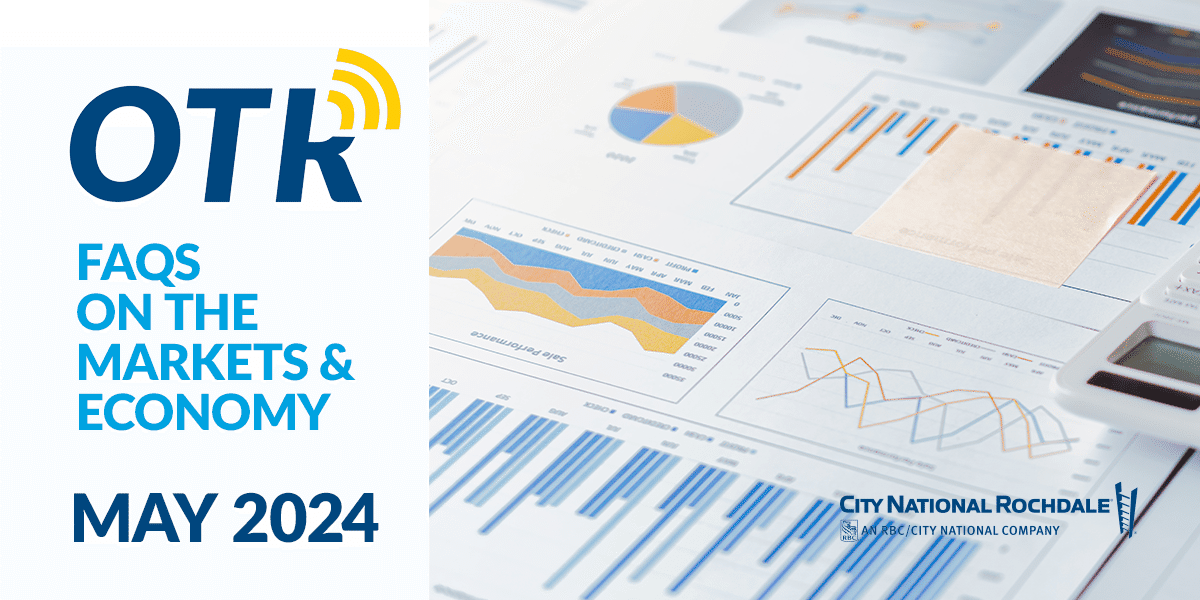-
Economic Perspectives
The Long and Winding Road to Housing Stabilization
July 2023
- Filename
- Economic Perspectives JULY 2023.pdf
- Format
- application/pdf
TRANSCRIPT
This month, we are going to spend our time focusing on the housing sector. When the Fed began raising interest rates back in March of last year, we knew it would have an impact on housing. This is because housing is the most interest-rate-sensitive sector of the economy.
Now, housing is a little bit more complicated in terms of understanding versus other data that comes out. For example, there is only one labor report and one Consumer Price Index (CPI) report, but for housing, we need to look at an awful lot of data to get a feel of what economic transitions are happening. Today, we are going to go through a number of charts to talk about what has happened with housing and our expectations going forward.
[ Chart 1 & 2: 0:55 ] In this first group of charts, we have a very broad view of what is going on in the housing sector in terms of its relationship to the overall economy, or Real Gross Domestic Product (GDP). Within GDP, the housing sector is called “Residential Investments,” or the building of homes. Housing has become a smaller percentage of the overall economy since the global financial crisis compared to what it was beforehand.
There are two reasons for this: One is that demand for homes over the past decade was quite low because many young people that would normally be buying new homes did not want to because they saw the big losses that their parents had taken on their homes during the housing bust. Secondly, the lenders were still licking their wounds from the global financial crisis, and they were only issuing mortgages at attractive levels to people with high levels of credit quality. This suppressed the amount of home construction that was going on.
The chart on the right is a more contemporary view of what is going on in terms of the housing sector. This is measuring the percent change — the columns are quarterly and the line is the year-over-year (annual rate). For the last eight quarters, it has been a drag on economic growth, clearly showing that there has not been enough construction going on to meet the demand.
[ Chart 3: 2:15 ] Household formations are the amount of new households being created. The five-year moving average has been upward trending. This means that the demand has been picking up. What it does not show is the demand for homes increased significantly following the pandemic as people moved out of rentals and wanted to own their own home. What we had was a combination of limited supply in the market for the last decade or so, clashing with a high level of demand, and that resulted in higher pricing.
[ Chart 4: 2:54 ] Relative cost of a home is an important way of measuring the change in the value of a home because it depends on how much money people are bringing in. Following the pandemic, it skyrocketed to 4.3 times the earnings of a household. That's an awful lot compared to what it was just before the pandemic at around 3.4%. So housing has gotten very expensive, and, of course, what this means is seen in this next chart in terms of inflation.
[ Chart 5: 3:26 ] The CPI group calls housing “Shelter,” and you can see from 2021 to 2023 it took off, which became a big concern for the Federal Reserve Bank. They wanted to bring this under control because shelter costs make up about a third of CPI. That is why they began raising short-term interest rates and changed their holdings of bonds, and that pushed up longer-term interest rates.
[ Chart 6: 3:55 ] You can see that this chart is showing us the mortgage rate for newly acquired homes. As you can see, it is at an extremely high level that we haven't seen in quite some time, and then it really had a big impact in terms of home buying.
[ Chart 7: 4:09 ] This chart shows what a mortgage payment would be for a median-priced home. The most recent data we have is from June 2023, and it is around $2,200 for a median-priced home. Look at where it was just two years ago: in June 2021 it was about $1,000 less. That had a big impact in terms of the demand for homes, and we see demand drop off significantly in the next chart (New & Existing Home Sales).
[ Chart 8: 4:39 ] The sale of new and existing homes dropped by about a third, which is a significant decline to levels that we have not seen in a long time. This was a bit of a shock — normally, when the Fed raises interest rates, it does not have that big of an impact on the housing market. This can be seen in this next chart (Existing One Family Home Sales).
[ Chart 9: 5:03 ] Existing One Family Home Sales were dramatically impacted this time. The black line toward the bottom shows the percent change in home sales since the Fed started raising interest rates. As you can see, home sales are down by about one third. This chart is also shows other business cycles when the Fed started to raise interest rates and what the impact was on the housing market. The percent change goes back to the 1970s, and there was only one other time that we saw interest rates having an impact on home sales. Most other times, change continued into the positive sector. The Fed accomplished what it wanted to do in terms of reducing the demand and hopefully bringing down pricing for a lot of these homes, but what's interesting is how the Fed has affected whether the sale is for a new home or an existing home.
[ Chart 10: 5:43 ] It is important to remember that existing homes make up nine out of 10 homes that are sold each year. New homes make up the other 10%. In the red ovals you can see a deviation taking place, because when you take a look at these two sectors, for the decade beforehand, they pretty much moved in tandem. However, what we saw following the early days of the pandemic, is that the amount of existing homes did not increase in sales nearly as much as new homes. The reason for that had to do with the fact the people who owned homes did not want strangers around during the pandemic days. Not many were for sale, so people bought new homes.
If you look at the oval on the right-hand side, we see a deviation going on again. The reason this time is that there is not enough supply of existing homes coming into the market.
[ Chart 11: 6:49 ] The reason for this is that people with an existing home really do not want to give up the low mortgage they have had. They were able to refinance at a very low rate, and that has been helping the economy because it provided more cash flow, but they do not want to give that up. The difference between what people have for a mortgage versus the new mortgage rate is very high. The light blue line is the mortgage rate for a newly acquired 30-year fixed rate mortgage, and the dark blue line represents what is existing — the weighted average amount of all the people who own homes. The difference is very high, and is why there are not many existing homes in the market. As a result, existing home sales have been falling.
[ Chart 12&13: 7:33 ] These next charts show how existing home sales have come down significantly since 2022. Inventories right now of existing homes is 1.1 million — well below the long-term average of 2.4 million. You have less than half the supply that you normally average. That just means there are not going to be as many sales of existing homes. It is pushing people off into newer homes, and that's the important part.
[ Chart 14: 8:08 ] New home sales are trending up. People are buying the newer homes that are on the market, but there is not enough of them in general. We see demand for creating more homes is increasing.
[ Chart 15: 8:24 ] This means building permits. If you look over on the right-hand side, the trend has stabilized and is actually starting to move back up again. That means that this part of the economy might see some growth going forward, and homebuilders are happy with this. A big part of the problem in the last few years has been the cost of labor and the cost of materials.
[ Chart 16: 8:47 ] Although labor has not fallen much in terms of cost, material prices have. Lumber prices skyrocketed in the early stages of the pandemic. You can see that the futures market was trading around $400, and it went up around almost $1,600 — a four-times increase (pretty significant), but now they're back down to the levels that we had beforehand.
[ Chart 17: 9:11 ] On this next chart (NAHB Home Builder Survey), you can see where the material cost is making homebuilders very happy. This is a measurement of homebuilders from the National Association of Home Builders (NAHB). It is a diffusion index, so whenever the number is above 50, it means expansion. You can see that the line is above 50, so homebuilders are quite happy about it going forward.
[ Chart 18: 9:31 ] On the Bloomberg Housing/Real Estate Surprise Index, you can see that the data coming out on the housing sector has been very good in terms of the economic releases. You can see the upward swing over on the right-hand side has been quite significant compared to what we have seen in the past. This sector of the economy is doing much better, and it is doing better because the supply and the demand are sort of meeting each other. It is causing prices not to appreciate nearly as much as what we had seen in the past.
[ Chart 19: 10:03 ] Housing Costs shows the cost of housing in terms of percent change for whether you own a home or rent a home. The increases have declined significantly over the past year or so based on the Fed's actions.
[ Chart 20: 10:23 ] What does this mean for the inflation part of the housing sector? The chart that we had earlier showed the year-over-year change of shelter costs, but if we add on the change of the last three months and annualize it, you can see that shelter costs are coming down significantly. This is telling us the more current trend —the price increase right now just stands at 5.5% for the last three months change annualized, and back in February this year, it hit a peak of 9.5%. The cost is accomplishing what the Fed wants to have happen: supply is meeting the demand.
[ Summary: 10:57 ] So what can we draw from all of this information?
There are two important points here. First, the worst of the housing market is probably behind us. We think housing will be a positive contributor to GDP going forward. It will not be significant, mainly because of the affordability aspect (home prices and financing costs are high), but because of that, the market changes have reduced the amount of demand and is bringing it much closer to the amount of supply. The second point is that if you have neutrality between the demand and supply, the inflationary pressures should not be significant, which is exactly what the Fed wants. What we are seeing is an improvement in the housing, and the inflation of housing, being fixed in a relatively quick period of time without a problem being created.
Stay Informed.
Get our Insights delivered straight to your inbox.
Put our insights to work for you.
If you have a client with more than $1 million in investable assets and want to find out about the benefits of our intelligently personalized portfolio management, speak with an investment consultant near you today.
If you’re a high-net-worth client who's interested in adding an experienced investment manager to your financial team, learn more about working with us here.



